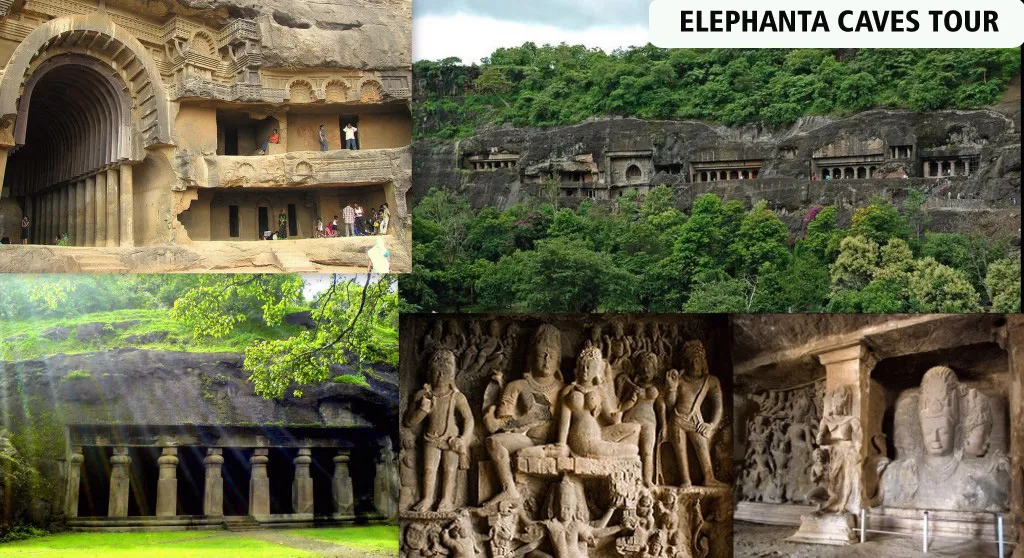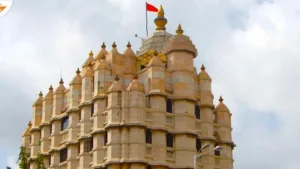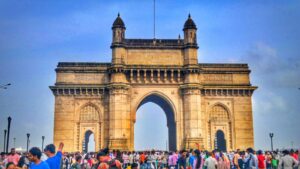Explore the Mystical Elephanta Caves: A Journey into Mumbai’s Ancient Heritage
Introduction to Elephanta Caves Mumbai
Did you know there’s an island near Mumbai where giant rock temples were carved more than 1,400 years ago, without machines? That’s the charm of the Elephanta Caves Mumbai.
Located on a quiet island, away from the noise of the city, these caves bring you face to face with timeless art, sacred temples, and sculptures that speak of India’s spiritual past.
Recognized as one of the UNESCO World Heritage sites India is proud of, the Elephanta Island Caves are living history. For travelers, they are a must-see part of Mumbai sightseeing and heritage.
Elephanta Caves History: Origins and Significance
The Elephanta Caves’ history takes us back to the 5th and 6th centuries. Historians believe the caves were carved during the rule of the Kalachuri dynasty. The Portuguese later named the island “Elephanta” after spotting a large stone elephant near the shore. Sadly, the statue broke, but the name stayed forever.

The caves showcase Elephanta Caves ancient art that blends devotion and skill. They mostly focus on Lord Shiva, with massive rock sculptures that reflect Indian mythology and Elephanta sculptures. Alongside Hindu shrines, you will also notice traces of Buddhist caves in Elephanta, which proves how different faiths coexisted here centuries ago.
Every wall, every carving, has meaning. The sculptures are not just artistic, they were spiritual centers where people came to pray and reflect.
Where is Elephanta Caves: Location & Accessibility
Many first-time visitors wonder: where is Elephanta Caves exactly? The caves sit on Elephanta Island Mumbai, also called Gharapuri (meaning “city of caves”). This small island is about 11 km northeast of Mumbai’s Gateway of India.
Getting there is an experience in itself. You’ll need to take a ferry from the Gateway. Ferries leave every 30 minutes and the ride takes about an hour. Along the way, you see fishing boats, seagulls, and wide views of the Arabian Sea. On clear days, the Mumbai skyline looks striking from the water.
When the ferry docks, you can either walk along the jetty or hop on a toy train that carries visitors closer to the hill base. From there, about 120 stone steps lead up to the caves. The climb is shaded by trees and lined with local vendors selling coconut water, handicrafts, and snacks. It’s best to start in the morning to avoid heat and enjoy enough time exploring the site.
Elephanta Caves Tour Experience
A Elephanta Caves tour is about stepping back into a world where religion, art, and history merge. The main cave, often called the “Great Cave,” is the highlight.
Inside, you’re greeted with rows of stone pillars, grand halls, and stunning sculptures carved directly from basalt rock.
Guides often explain that these carvings were created with basic chisels and hammers. No cement, no added materials, just stone shaped with patience. Every sculpture is a lesson in devotion and artistry. The caves are cool inside, making them comfortable to explore even on hot days.
The Iconic Trimurti Sculpture
The star of the Elephanta Island Caves is the Trimurti, a 20-foot masterpiece showing three faces of Lord Shiva, creator, protector, and destroyer. Many consider this the heart of the caves. The balance of power, calm, and anger in the sculpture is breathtaking.
It’s also the most photographed spot in the caves, often used in textbooks and documentaries to showcase Indian mythology and Elephanta sculptures.
Main Temples and Cave Structures
The main cave, also called the Great Cave, holds several shrines and grand pillars. Carvings here show Hindu deities in Elephanta Caves, such as Nataraja (Shiva as the cosmic dancer) and Ardhanarishvara (half Shiva, half Parvati). The layout feels like stepping inside one of the finest rock-cut cave temples Mumbai has to offer.
There are also smaller caves, including ones with Buddhist influence, though they are simpler in design compared to the main temple cave.
Cultural Insights During the Tour
Walking through these caves is like flipping pages of a stone book. Local guides often explain how artisans worked in near darkness with oil lamps, carving each figure by hand. This effort took decades, maybe even generations.
During festivals like Mahashivratri, the island still draws hundreds of devotees who gather to honor Shiva. The atmosphere is electric, with chants, rituals, and traditional music filling the caves. For travelers, this is a rare chance to witness how ancient spaces still hold meaning today.
Outside the caves, the island’s rural life is equally interesting. Villagers sell crafts, offer simple meals, and keep traditions alive. This blend of history and present-day culture makes the Elephanta Island Caves much more than a tourist spot—it’s a living heritage site.
Things to Do at Elephanta Island Caves
Beyond the caves, there’s more to enjoy on Elephanta Island Mumbai. You can:
- Visit the small museums on the island that explain the Elephanta Caves history.
- Explore local stalls selling snacks, souvenirs, and handmade crafts.
- Enjoy panoramic views of the sea and the Mumbai skyline from hilltop points.
- Experience the toy train ride, especially fun for children.
Travel Tips for Your Elephanta Caves Tour
A smooth trip to the Elephanta Caves Mumbai needs a little planning:
- Ferries run from 9 AM to 5 PM, so start early to enjoy enough time.
- Carry water, as walking up the steps can be tiring.
- Avoid visiting on Mondays; the caves are closed.
- Wear comfortable shoes, since you’ll walk a lot.
- Photography is allowed, but be respectful inside sacred areas.
Why Visit Elephanta Caves Mumbai?
You may wonder, “why should you plan a Elephanta Caves tour when Mumbai has beaches, markets, and modern attractions?” The answer is simple.
The caves are living pieces of India’s past. They reflect devotion, skill, and culture in a way no modern monument can. For lovers of art, history, or spirituality, the Elephanta Island Caves are an experience you can’t miss.
The Bottom Line
The Elephanta Caves’ history is not just about kings or dynasties. It’s about how humans used stone to tell timeless stories. Visiting the Elephanta Island Mumbai gives you a pause from the city, a chance to touch history, and to reflect on India’s roots.
What is the story of Elephanta Caves Mumbai?
They were carved in the 5th–6th century, mainly dedicated to Lord Shiva. The caves show religious and artistic life of that era.
What is the ticket price of Elephanta Caves toy train?
The toy train ride from the jetty to the steps costs around ₹10 per person.
How to Elephanta Caves from Mumbai?
Take a ferry from Gateway of India. It takes about one hour to reach the island.
What is the best time to visit Elephanta Caves?
November to February offers the most pleasant weather. Summers can be hot and monsoons make ferry rides tricky.
Which God is worshipped in the Elephanta Caves?
Lord Shiva is the main deity honored here.
How many steps are in Elephanta Caves?
There are about 120 steps leading up to the main caves.
Is Elephanta Caves worth it?
Yes, absolutely. The art, history, and peaceful island setting make it one of the most unique places near Mumbai.




